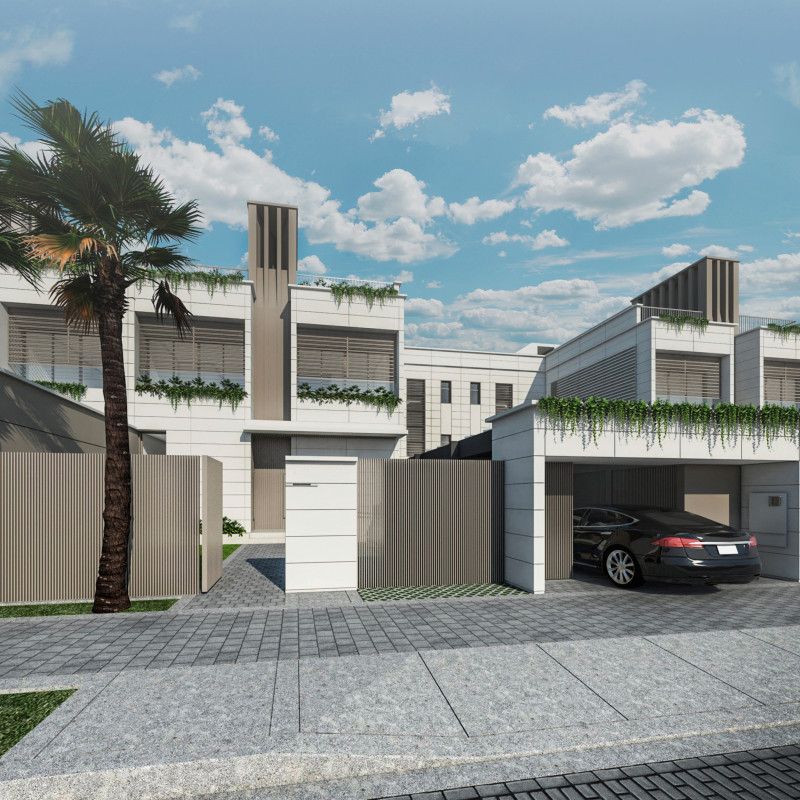5 key facts about this project
The design reflects a coherent narrative that intertwines aesthetics and practicality. The use of natural materials, including timber, brick, and large glass windows, promotes a connection with the outdoors, allowing ample natural light to fill the spaces. This fostering of transparency creates a welcoming atmosphere while also bridging the indoor and outdoor environments. The building’s massing is carefully considered, yielding a scale that feels appropriate within its urban context and respects the architectural language of surrounding structures.
Important elements of the project include the strategic placement of green spaces and terraces that not only provide recreational opportunities but also serve ecological functions. Roof gardens and planted balconies contribute to biodiversity and improve the urban heat island effect, demonstrating a commitment to environmental responsibility. The incorporation of these green elements is complemented by energy-efficient systems, such as solar panels and rainwater harvesting technologies, reflecting a modern approach to sustainable architecture.
In addition to its environmental focus, the project is designed with the community in mind. The ground floor is open to the public, featuring flexible spaces that can host various activities, from art exhibitions to community gatherings. This dedication to community engagement is pivotal, fostering a sense of belonging and encouraging social interactions. The layout of the interior spaces is optimized for versatility, accommodating a range of lifestyles and preferences, and ensuring that the building can evolve with the needs of its users over time.
The design also embraces unique architectural ideas, such as the integration of passive design strategies. Large overhangs and strategically placed windows minimize heat gain during the summer months while maximizing light and warmth during winter. These choices are not only practical but also enhance the overall aesthetic experience of the architecture. The thoughtful hierarchy of spaces, from public to private, is essential in creating a cohesive flow that enhances usability and comfort for residents.
An understanding of the cultural context informs material selections and design decisions, ensuring that the project resonates with the local community while also introducing modern architectural language. The contrast of textures between the warm timber facades and the sleek glass surfaces evokes a sense of harmony in a bustling urban environment. This artful juxtaposition highlights the blend of tradition and modernity, promoting a dynamic dialogue between the building and its context.
As the architectural project continues to define its role within the community, the focus remains on crafting inclusive spaces that cater to diverse populations. The ability of the design to adapt to changing needs is a testament to its effective planning and innovative approach. The architecture is not just a static entity; rather, it is a living arrangement that encourages dialogue and interaction among its users.
For those interested in exploring this project in greater depth, a wealth of information such as architectural plans, architectural sections, and detailed architectural designs is available for review. Engaging with these elements can provide deeper insights into the architectural ideas that shaped this project and its role within the environment it inhabits.


























